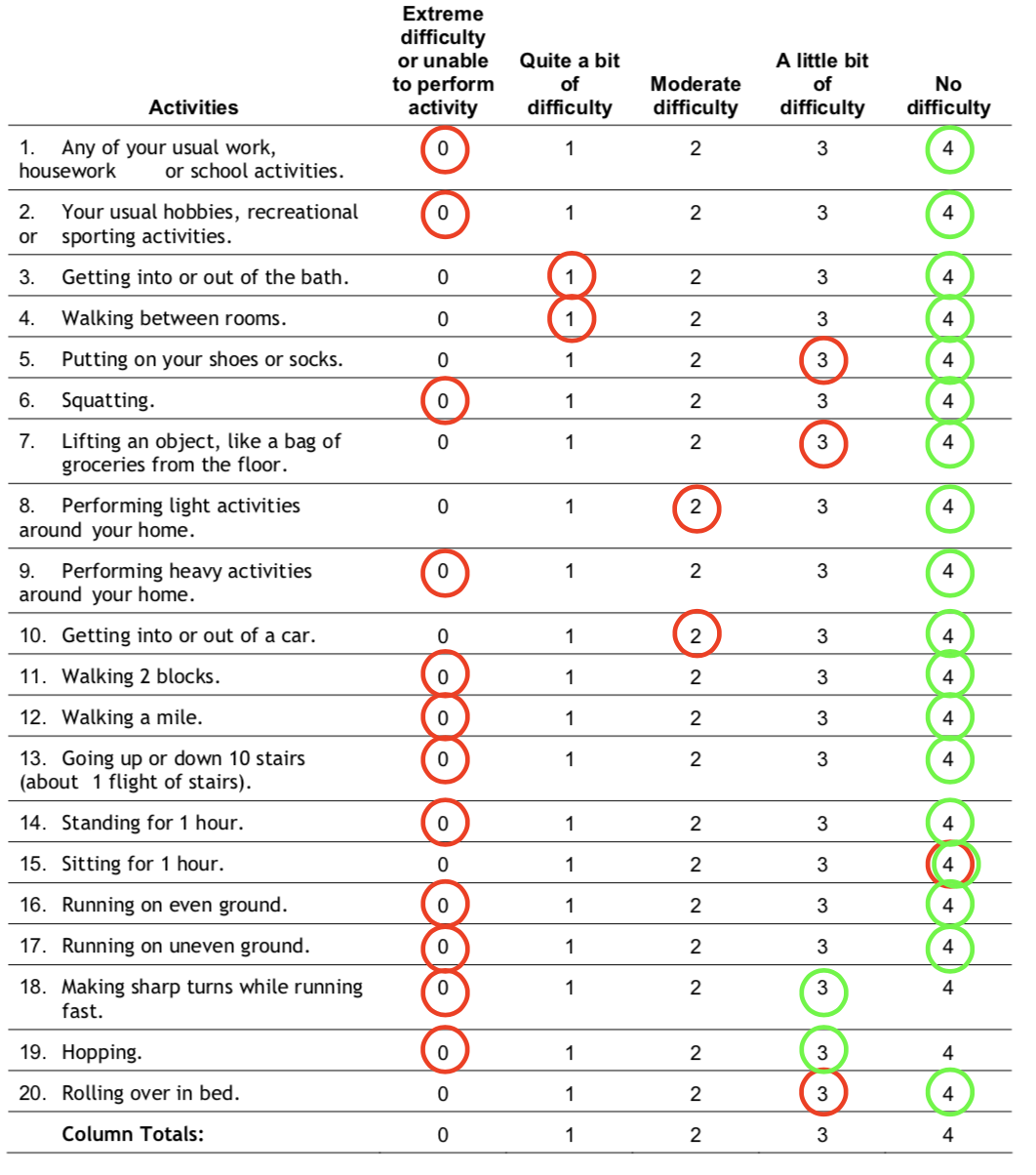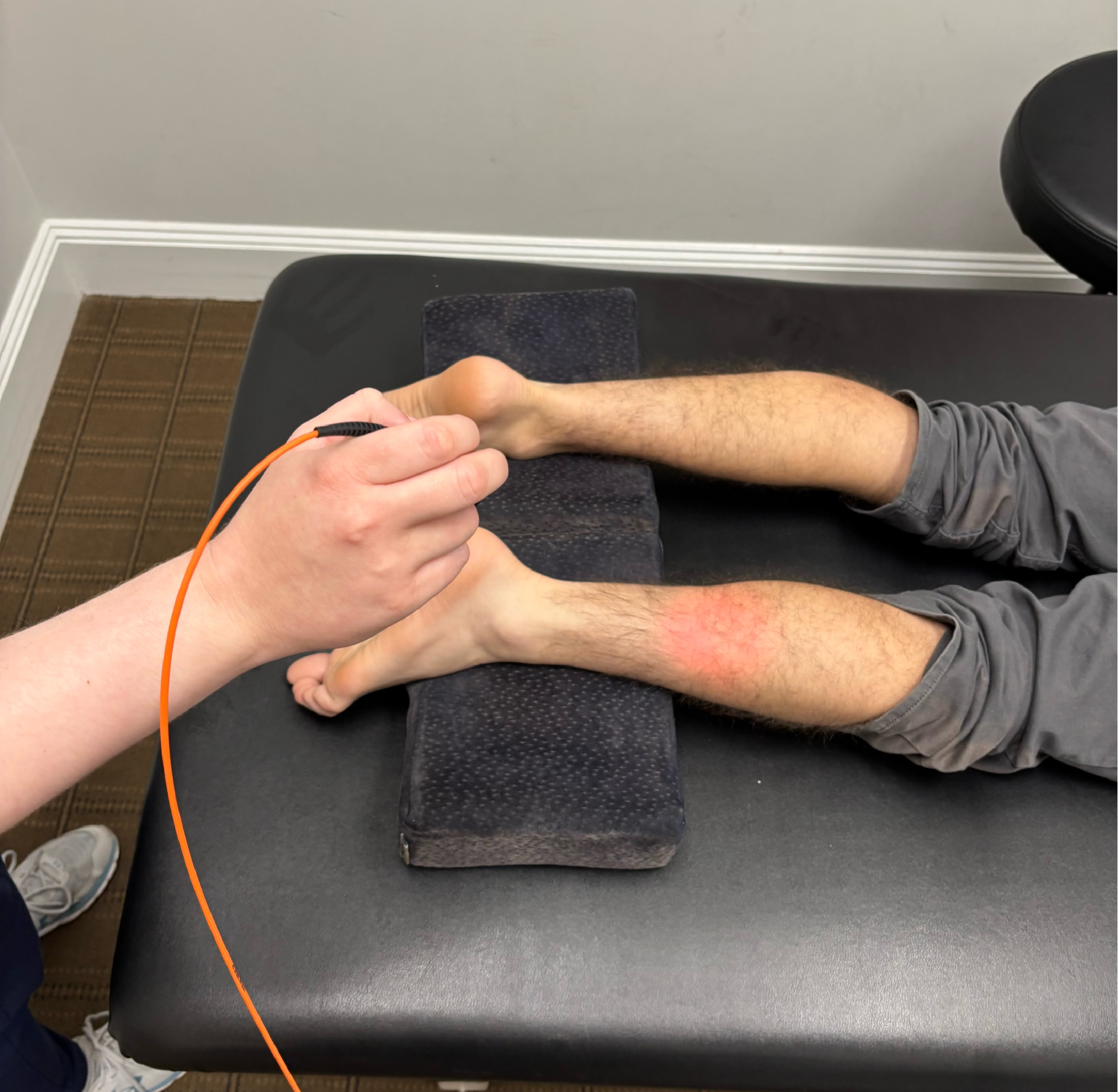For More Information About Physical Therapy
The Power Of Light
CASE HISTORY
A 52-year-old male was referred to physical therapy by his orthopedist with complaints of 10/10 achy pain in the right calf precipitated by a “popping” sensation while cutting during a tennis match 1 week prior.
PHYSICAL EXAM
Patient presented ambulating with bilateral axillary crutches, weight bearing as tolerated. Active range of motion (AROM) and Passive Range of Motion (PROM) of R ankle assessed within normal limits, with a noted increase in R medial calf pain with AROM plantarflexion (PF) and PROM dorsiflexion. Manual Muscle Testing (MMT) was 2+/5 for R plantar flexion, and 5/5 for all other motions. Ecchymosis was observed on the medial calf with the presence of edema. Palpation revealed sever tenderness to the medial gastrocnemius/soleus complex.
Special Tests:
(-) Thompson Test
(-) Homan Sign
DIFFERENCIAL DIAGNOSES
Plantaris strain
Posterior Tibialis strain
Partial Achilles tendon rupture
CASE HISTORY
A 52-year-old male was referred to physical therapy by his orthopedist with complaints of 10/10 achy pain in the right calf precipitated by a “popping” sensation while cutting during a tennis match 1 week prior.
Test & Results
Lower Extremity Function Scale (LEFS) score: 19/80 X-Ray Ordered by physician: negative for fracture
References
Bastford, J. R., Sheffield, C. G., & Harmsen, W. S. (1999). Laser Therapy: A Randomized, Controlled Trial of the Effects of Low-Intensity Nd:YAG Laser Irradiation on Musculoskeletal Back Pain. Arch Phys Med Rehabil, 80. https://doi.org/10.1016/s0003-9993(99)90167-3 White, P. F., Elvir-Lazo, O. L., & Hernandez, H. (2017). A novel treatment for chronic opioid use after surgery. Journal of Clinical Anesthesia. https://doi.org/10.1016/j.jclinane.2017.03.046 White, P. F., Cao, X., Elvir-Lazo, L., & Hernandez, H. (2017). Effect of High-Intensity Laser Treatments on Chronic Pain Related to Osteoarthritis in Former Professional Athletes: A Case Series. Journal of Molecular Biomarkers & Diagnosis. https://doi.org/10.4172/2155-9929.1000343 Prakash, A., Entwisle, T., Schneider, M., Brukner, P., & Connell, D. (2017). Connective tissue injury in calf muscle tears and return to play: MRI correlation. BR J Sports Med. https://doi.org/10.1136/bjsports-2017-098362 Ekstrand, J., Hägglund,, M., & Waldén, M. (2011). Epidemiology of Muscle Injuries in Professional Football (Soccer). AM J Sports Med. https://doi.org/10.1177/0363546510395879 Werner, B. C., Belkin, N. S., Kennelly, S., Weiss, L., Barnes, R. P., Potter, H. G., Warren, R. F., & Rodeo, S. A. (2017). Acute Gastrocnemius-Soleus Complex Injuries in National Football League Athletes. Orthop J Sports Med. https://doi.org/10.1177/2325967116680344


The Power Of Light
FINAL DIAGNOSIS
Patient was diagnosed with a grade 2 medial calf strain by physical exam performed by his orthopedist and physical therapist.
DISCUSSION/TREATMENT
Patient was referred to PT with a grade 2 calf strain by his orthopedist with a recommended dosage of twice a week for 6-8 weeks. The patient received traditional PT treatment in the form of soft tissue mobilization, gentle stretching, AROM exercises, ice, and premodulated E-Stim to his R calf. He also received a novel treatment with the Phoenix Thera-Lase Class Four Cold Laser (74 Watts, 1275 nm wavelength) for 15 minutes.
OUTCOME
The patient returned to playing tennis pain free in just 2 weeks, significantly shorter than the typical six-to-eight-week recovery period for a grade 2 calf strain. Key improvements included full pain free range of motion, 5/5 muscle strength in the R ankle, no pain or tenderness in the R calf and a LEFS score of 78/80, suggesting cold laser therapy may have accelerated the athletes return to sport. Although the Phoenix Thera-Lase System has shown efficacy in managing low back pain and osteoarthritis, its impact on acute muscle strains and accelerating return to sport remains unstudied. This lack of research limits our understanding of its potential benefits for acute musculoskeletal injuries and highlights the need for further investigation to enhance treatment options and support faster recovery for athletes.

